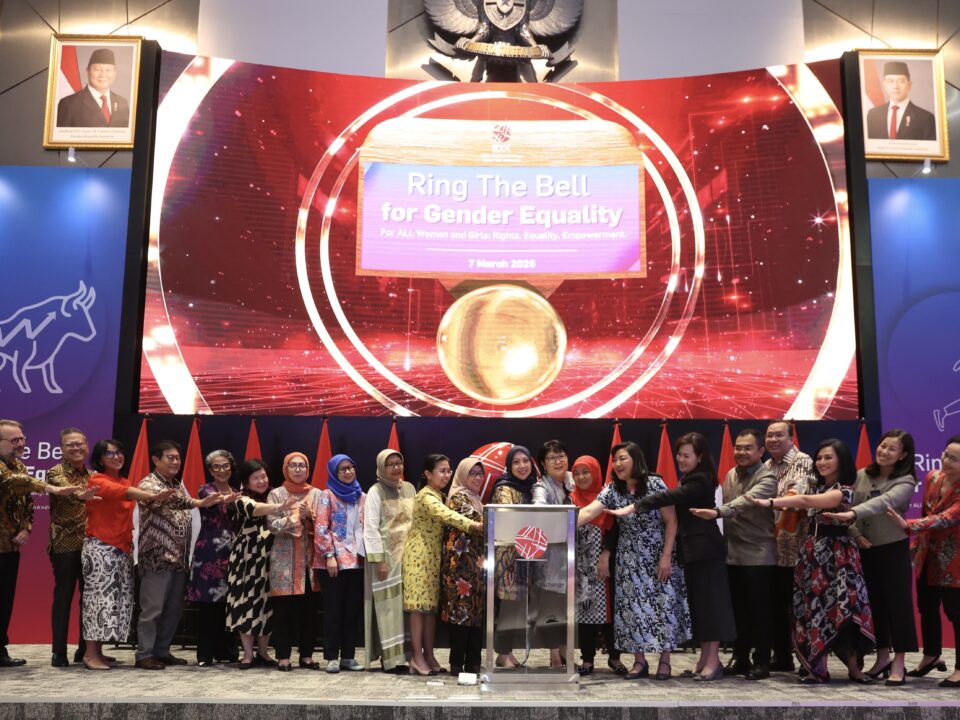
Get Rid of Traditional Approaches in Preventing and Dealing with Sexual Harassment in the Workplace
December 24, 2023
Supporting Female Employees Means Supporting the Company’s Advancement
December 24, 2023Photo by Freepik
Too few women are reaching the top of their organizations, and a big reason is that they are not getting the high-stakes assignments that are prerequisites for a shot at the C-suite. Often, this is due to a lack of powerful sponsors demanding and ensuring that they get these stepping-stone jobs.
The vast majority of CEOs come from line positions — positions with authority over major initiatives. But, as the 2016 McKinsey Women Matter study showed, as women move up their organizations’ hierarchies, they increasingly shift from line to staff jobs — roles requiring focused expertise or assistance rather than responsibility for major projects — while the percentage of men in line roles remains about the same. By the time women reach the upper-middle management levels, only about 20% are in jobs with profit and loss responsibility.
Not only are men more likely to be in line jobs, they get bigger jobs overall. A 2012 study of alumni of top business schools found that, other things being equal, more men than women had direct reports and budget responsibility of greater than $10 million. Men’s projects had budgets twice as big as women’s and headcounts three times the size. About one third of the men reported getting a great deal of C-suite visibility while working on their projects, compared to one-quarter of the women.
This disparity in access to critical roles may be compounded, or perhaps caused, by differences in women’s and men’s relationships with executives who can provide access to those jobs. Here human nature creates an uneven playing field: People’s tendency to gravitate to those who are like them on salient dimensions such as gender increases the likelihood that powerful men will sponsor and advocate for other men when leadership opportunities arise.
The similarity principle – which affects all workplace relationships — is even stronger when it comes to sponsorship, because the stakes are higher. Sponsorship is a kind of helping relationship in which senior, powerful people use their personal clout to talk up, advocate for and place a more junior person in a key role. While a mentor is someone who has the knowledge and will share it with you, a sponsor is a person who has power and will use it for you.
When it comes to this important distinction, the evidence is also clear: women tend to be over-mentored and under-sponsored.
Research by Herminia Ibarraci et al have found that having a mentor increased the likelihood of promotion two years later for men, but had no effect on promotion for women. One reason was that the women’s mentors were less senior than those of the men and, as a result, lacked the clout needed to advocate for them.
Likewise, the women in the McKinsey research reported having fewer meaningful interactions with senior leaders, compared to their male peers—and this gap widened as they advanced. Yet, a senior person needs to get to know a potential protege well enough to vouch for them, especially when there is competition for a coveted role. The women in the McKinsey study were also less likely to say that a senior leader outside their direct management chain had helped them get a promotion or challenging a new assignment—even though women were more likely than men to have been assigned a formal mentor.
Herminia Ibarra have worked with dozens of organizations that have experimented with sponsorship schemes only to return to less controversial (and less effective) mentoring programs. Typically, they abandon sponsorship because experience has shown them that while you can ask senior executives to provide advice and support to high-potential women, you cannot mandate that they spend their personal capital advocating for people they don’t know well or may not be bullish about.
This is a legitimate concern, and it’s important to recognize it. While an executive’s store of knowledge will not be depleted if he or she shares it with someone else, the political capital he or she spends fighting for someone to get a key assignment can no longer be used on something else. So, it is only rational for them to use it sparingly — especially if you consider sponsorship to be binary: either you fully sponsor a person or you don’t.
But sponsorship doesn’t have to be all-or-nothing. Companies need to shift away from seeing sponsorship as an either/or and move toward a view of sponsorship as a spectrum of behavior, one that allows various types of commitment — and one I’ve found to be more effective in connecting women to powerful sponsors.
On the least publicly committed end of the spectrum is a classic mentoring relationship, one in which the mentor provides personal advice and support privately, with no more at stake than the time invested. On the most committed end of the spectrum, is a classic sponsorship relationship on which the sponsor advocates for an individual, typically in a succession contest for a significant role, with his or her reputation at stake.
In between these opposite ends of the spectrum lie a range of helping roles that can, over time, evolve authentically to full sponsorship. This leads to better outcomes than having executives tick a box on a formal program without ever really becoming an advocate. In order of ascending commitment, these include:
-
Strategizer: An executive shares their ‘insider knowledge’ about how to advance in the organization. They strategize with their mentee about how to get ahead and how to fill any developmental gaps that might block her progress.
-
Connector: An executive makes introductions to influential people in their network. They talk up their mentee with peers, and use those interactions to learn more about how she is seen by others.
-
Opportunity giver: An executive gives their protege a high visibility project or promotion, within the scope of roles under their control.
A study conducted by David Smith & Brad Johnson at the U.S. Naval Academy and War College, for example, found that when women are mentored by men, they make more money, get more promotions and have better career outcomes – not because men are better mentors but because they have more power.
Having an executive-level sponsor can be make or break for a high-potential woman’s career, particularly when it comes to getting important roles that are stepping-stones to the top. But in order for these kinds of relationships to flourish, both executives and their organizations must be clear about what sponsorship is and what steps they might take in order to ensure women have the full-bloom sponsorship support they need.
To understand the importance of sponsorship programs in the workplace to support women’s leadership, watch the webinar of 2021 National Women’s Day entitled Enough with Business Case and Start with Sponsorship; Advancing Women into Leadership.
This activity was organized by IBCWE, Investing in Women, Australian Embassy; sponsored by Pertamina; and in partner with KLY and Fimela.com.

*Herminia Ibarra is the Charles Handy Professor of Organizational Behavior at London Business School and the author of Act Like a Leader, Think Like a Leader (Harvard Business Review Press, 2015).
8 December 2021
Fellicca P. Madiadipura





